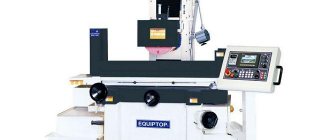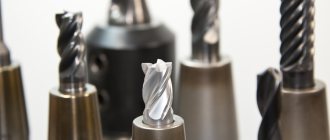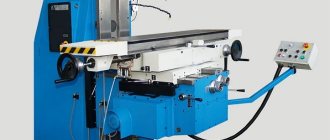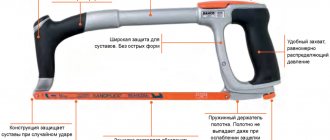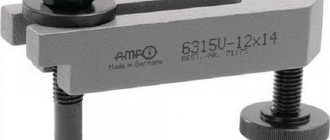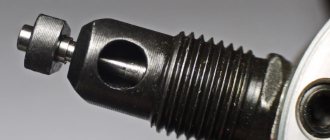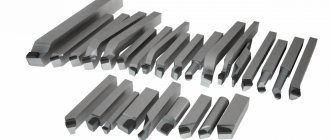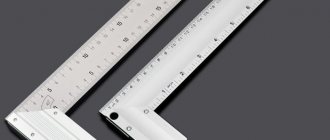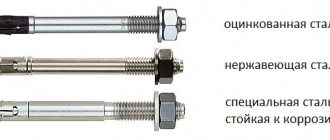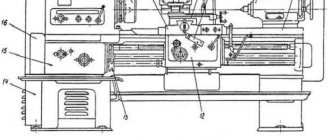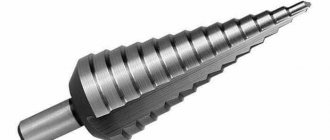What are rollers and what are they used for?
Roller cutters are also called burrs and drills of ball, cone, cylindrical and other types, depending on the shape of the nozzle. Structurally, the nozzle consists of two parts - a cylindrical tail part for fixation in the drill chuck, as well as a working area or head. If everything is simple with the shank of the nozzle, then the working part needs to be dealt with in detail, since the shape of the heads can be different, which determines the ability of the tool to achieve the final result.
This is interesting!
An analogue of cutters are wood cutters on a drill, which are used to make appropriate cuts and shapes in woodworking materials.
The cutters are used for use in conjunction with specialized power tools that are capable of spindle rotation speeds of up to 60 thousand revolutions per minute. These tools include CNC machines. The drill reaches speeds of up to 7-8 thousand revolutions per minute, so the use of burrs in this tool is incorrect, but possible. If it is necessary to process a metal workpiece, then in isolated cases the use of a drill is acceptable.
Metal cutters for drills have simplified head shapes, which ensures their functionality in the chuck of low-power tools. Various materials with high strength are used to make burrs. These are alloy and tool grades of steel that have a positive effect on functionality and also have a long service life.
Types of tools and design features
According to the material used in the design, the types of metal cutters come from:
- carbon steel;
- diamond;
- abrasive;
- carbide.
Carbon steel is used in cutters, which are used in working with an electric drill. With their help, you can process wood and metal products, round corners, drill new holes and bore old ones. Its main advantage over other types of burrs is its low price.
Diamond cutters for metal are more often used in production, but they can also be found in the kit of a craftsman who does repairs. In addition to professional equipment, they are also suitable for electric drills. The working surface of such a cutter is coated with diamond coating. This allows you to grind and bore holes. Used for processing both brittle and hard materials.
Abrasive cutters
In terms of manufacturing technology and scope of application, an abrasive cutter is similar to a diamond cutter. Electrocorundum is often used instead of diamond chips. The short service life is compensated by the low cost.
Carbide cutters are used in production in powerful machines that allow rotation speeds of up to 60,000 rpm. They are used to process high-hardness steels and alloys, cast iron, titanium and much more. The use of carbide burrs allows for the best processing of welded seams.
The stores offer a variety of sets of metal cutters, which differ in head shape:
- cylinder;
- sphere;
- oval;
- parabola;
- tongue of flame;
- countersink.
The cylindrical shape allows you to bore holes (including blind ones), machine ends and internal corners. The end of such a cutter can be spherical or smooth. The first option will not allow you to do some operations, but it will be possible to use it instead of a sphere and save money on it. If the burr is coated with diamond or abrasive coating, then it can be used to sharpen the tool.
Diamond cutter
The spherical head is used for smoothing product edges, internal corners and welds, sharpening, grinding and much more. The oval shape of the head gives it versatility and gives it the capabilities of both cylindrical and spherical heads. When processing internal surfaces with such a cutter, there will be no deep groove left. Very often used in the automotive industry and auto tuning when processing engines and manifolds.
The parabolic contour can be sharp or rounded. In the first version, this will allow you to easily remove burrs in gear parts. The rounded shape allows you to make small grooves and process internal welds.
The most common type of burr is a flame-shaped attachment. It is universal and suitable for most operations, even on the most difficult surfaces and materials.
G-Cut cutter shape countersink
A countersink is a special cutter that is used to chamfer a hole. This can be done with a drill with a large diameter, but a countersink allows you to make a more even surface and angle of inclination.
Where are the nozzles used?
The devices under consideration have found their application not only in the field of metal processing, but also in construction, automotive and mechanical engineering, as well as the mining industry. In addition, cutters are used in medicine, where they are used to drill teeth. In jewelry making, burrs are used for turning and making jewelry from gold and silver.
In addition to specialized applications, burrs are also used on the farm. When performing work that involves metal processing, you will need to buy cutters to carry out turning, finishing or drilling the appropriate shape of the workpiece. In addition to preparing metal, the attachments can also be used for processing wood, plastic and glass.
The use of cutters makes it possible to obtain smooth and neat surfaces in metal workpieces. There is no need to talk about the accuracy of machining with cutters in a drill chuck, but rough processing of the material is quite possible. If you need to obtain the highest quality, precise and accurate processing method, then for this purpose the attachments must be used in conjunction with special equipment - drills. But the price of such drills is very high, and it is rational to buy them in one case if you engage in metal processing at a professional level.
This is interesting!
A burr is a modernized analogue of a file. If the file requires manual action, then cutters are used in conjunction with power tools. This allows you to increase the speed of achieving results, as well as physically facilitate the process of processing materials.
What is a roller cutter and where is it used?
A roller cutter (burr, roller bit) is a tool whose history goes back more than a dozen, and perhaps more than one hundred years; there is no exact data on this matter. The design of this tool includes two main elements: a shank, with which the cutter is fixed in the chuck of the equipment used, and a working head, which performs the main work of grinding various materials. During processing, the cutter is given rotation, the speed of which can reach up to 60,000 rpm.
Modern manufacturers produce cutters made of different materials with working heads of various sizes and shapes. This diversity allows you to select a tool to solve specific technological problems. When making such a choice, they are guided primarily by the characteristics of the material from which the product being processed is made, as well as the geometric parameters of the latter.
Metal burrs with extended shank
Cutters for metal and other materials are actively used in many areas, including mechanical engineering, construction, automotive, mining, medicine, jewelry, etc. Using such a tool, you can effectively process products made of various metals, wood, stone, glass, etc. plastic.
You cannot do without cutters when producing plastic windows (with the help of such a tool the joints are cleaned). In the mining industry, it is practiced to use large-diameter stone cutters, the working part of which has carbide teeth installed. In jewelry and in the manufacture of decorative elements, small cutters are used to not only process small parts, but also apply inscriptions and patterns to the surface of products.
Engraving work with a mini cutter on ceramics
Dentistry is another area where cutters are used very actively. It is this kind of tool that is the working part of the well-known drill; it is also used in the manufacture of dentures. In everyday life, cutters installed in the chuck of a conventional electric drill are also used quite often. Using them, home craftsmen solve many problems related to home renovation and maintaining it in proper condition.
Using cutters, correctly selecting their shape and material of manufacture in accordance with the tasks to be solved, you can make a smooth and neat hole in glass, ceramic tiles, stone, brick and wooden products, clean welds efficiently, process hard-to-reach places, something no other tool can handle.
Types of cutters for drills
According to their design parameters, cutters are classified into three main types:
- Single cone
- Double-cone
- Tri-cone design
The nozzles in question are classified into types according to the shape of the heads. These heads come in conical, cylindrical, spherical, oval and semi-oval shapes. Before you buy a drill attachment for metal, you will need to find out what shapes the heads come in. It all depends on the planned technological task. In addition to the design and shape of the burr head, they are also classified into types according to the material from which they are made. Manufacturers produce nozzles from the following components:
- Carbon steels
- Diamond coated steel
- Abrasive cutters
- Carbide
What burrs are designed for is described below.
Cone manufacturers
Burrs today are produced by many companies and enterprises, both in our country and abroad. It is possible to order burrs according to an individual drawing. Since the scope of such a tool is large, it is not always possible to find the required analogue on sale.
Domestic manufacturers
Among the domestic manufacturers, we can note such enterprises producing cutters as:
- Geomash, which produces burrs with a diameter from 76 to 490 mm.
- "Praktika", producing diamond-coated roller bits.
- Delo Tekhniki is a Russian manufacturer of metalworking tools.
- "Zubr" - produces rollers with abrasive heads.
- Burintech mainly produces powerful cutters for drilling wells of various types (oil, mining, gas).
Foreign manufacturers
Among the most popular foreign products are products for grinding and other plumbing work from companies such as:
- German Karnasch.
- Chinese Sturm, producing diamond-coated cutters. Although the brand itself was developed in Germany.
- Kraftool I/E GmbH, of German origin, whose products are sold under the STAYER brand.
- GROSS, also of German origin. Appeared on the market since 2008.
- Dremel is an American company that produces silicon carbide burrs.
- Norton company, which produces cutters with abrasive and diamond coating.
Watch a video on working with burrs:
Whatever manufacturer you choose, do not forget that you may always need more than one cutter, so it makes sense to purchase sets of these devices so that each individual case has its own burr.
Carbon steel cutters that can be processed
Attachments made from carbon steel have found wide popularity for use in conjunction with drills and screwdrivers. With their help, not only metal, but also wood is processed. Carbon steel is one of the least expensive materials, so the price of the nozzles is affordable.
Nozzles made of carbon steel are used to process recesses that have a complex geometric shape. In addition, metal cutters can be used to remove and clean sharp edges on metal parts, as well as create smooth and neat holes. It often happens that a drilled hole does not satisfy technological tasks, so to drill out and increase the diameter of the hole, you need to use a burr.
This is interesting!
It is better not to try to increase the diameter of a hole in metal using large diameter drills or, conversely, small ones. This will cause a large diameter drill to become dull and a small drill to break into two parts.
Metal cutters with diamond coating
Diamond is the most expensive and durable material on the planet, which is why diamond-coated nozzles are quite expensive. Such attachments can also be used in conjunction with a drill and even a screwdriver for boring, grinding and stripping. In addition to metal, diamond-coated burrs are used for processing ceramics, glass and other fragile materials.
The main advantage of diamond-coated cutters is that they can handle a variety of materials - from wood to plastic, from metal to granite. Diamond sputtering makes it possible to obtain attachments with minimal roughness values. This means that they can be used to finish surfaces.
Processing Tips
Using a burr on a screwdriver or electric drill, you can process a wide variety of materials. But here it is important to follow a number of rules.
When working with a tool on stone or porcelain stoneware, you need to constantly moisten the surface being processed with water. Liquid should not come into contact with the electric tool, otherwise it may break.
Using cutters you can process not only natural wood, but also MDF, plywood, chipboard and fiberboard. A characteristic feature of a wood burr is a fairly large notch on the working element. If during processing you begin to smell something burning, you should set the power tool to a lower speed.
When working with ceramic tiles or glass with a roller cutter, be extremely careful and attentive. When processing such workpieces, it is necessary to pre-draw the outline of the hole on their surface using a special cutter. Then the hole is punched with a burr with a spherical working element.
When using an electric tool with a cutter, you must not forget about precautions and safety measures. Protect your hands and eyes from particles by wearing gloves and goggles.
Abrasive cutter for metal purpose
Abrasive cutters are used directly for processing metal materials, but they also do an excellent job with plastic, glass, ceramics, brick and even granite. They are manufactured using the spraying method, therefore they have the same roughness parameters as diamond burrs.
The heads of abrasive attachments have different shapes and are made in two ways: by spraying onto a metal base, and also by using a whole abrasive, which is often electrocorundum. The advantage of such attachments is that they are inexpensive and also cope well with the assigned tasks of processing various types of materials.
Carbide bits for metal
In addition to abrasive, diamond and carbon cutters, manufacturers also produce attachments made from carbide compounds. If the previous options can be used for processing different materials, then equipment made of hard alloys is used to work with cast iron, stainless and heat-resistant steel, as well as titanium alloys. All these materials are distinguished by their high hardness, so burrs must be used exclusively in conjunction with high-power electrical equipment.
For processing welds, it is recommended to use these types of cutters made of carbide materials. The advantages of the materials under consideration include the fact that they have a long service life if used as intended.
Knowing the main purpose of the nozzles, we can conclude that conical-type devices made of abrasives and carbon steel are suitable for use on the farm. These are exactly the kind of attachments that a craftsman who needs to process steel material should have.
How to properly use cutters on a drill
Roller cutters are not intended for use in the design of drills; therefore, in order not to reduce the service life of the tool, an appropriate approach to the use of burrs is necessary. If you take into account the tips and recommendations for using cutters in a drill chuck, you can prevent premature failure of the power tool.
- Avoid the possibility of the nozzle shank coming into contact with the surface being treated. The shank, unlike the head, is made of ordinary steel, so the slightest touch will cause overheating, as well as subsequent damage to the integrity of the entire nozzle
- Avoid excessive pressure on the material being processed by the nozzle. If you press the cutter on the material being processed, the friction force increases, which helps to reduce the speed. The electric motor of the tool experiences excessive loads, so if you do not want the drill to become unusable, processing must be performed correctly and carefully
- It is good to fix the workpiece in a vice. The work is performed by moving the tool, so the parts to be processed must be firmly fixed in a stationary position
- If the cutter is worn out or worn out, then you cannot continue working with it. After all, this increases the load on the tool, and the result will not be achieved with a faulty attachment.
- Dip the nozzle into a special lubricant during operation, which will prevent its overheating and failure
- The rotation speed of the chuck should be maximum, which will improve the quality of work performed
- Do not work in impact mode with cutters in a drill chuck, as they are not designed for impact loads and will quickly fail
Roller cutters are made by different manufacturers, but they are especially valued by cutters from Germany. Such attachments are not only reliable, but also highly accurate, but their price is not low. Before you buy burrs and use them in tandem with a drill, you need to understand what technological tasks you plan to perform.
About the correct choice of metal cutters for a drill
To achieve high efficiency from the use of cutters on a drill, it is necessary to take into account information such as the technological task, the type and geometric parameters of the material to be processed with the attachments. It is based on these factors that it is necessary to make the appropriate choice.
This is interesting!
When using a cutter on a drill, such tool parameters as power and number of revolutions are taken into account.
The higher their values, the better the processing result. Burrs on a drill can be used to perform rough processing of materials, the quality of which largely depends on the type of cutting teeth on the attachment. Based on this feature, cutters are of the following types:
- Fine teeth
- Universal teeth
- Ultra-fine toothing
- For processing soft metals - copper, aluminum, brass
To choose the right cutters for metal for a drill, you need to consider the following recommendations:
- If you plan to process soft metals, then you need carbide-type devices. Devices with reinforced sharpening can effectively handle non-ferrous metals
- For hard materials, it is necessary to use abrasive or diamond-coated equipment. They not only effectively cope with hard grades of steel, but also allow you to obtain a flat and smooth surface.
- To carry out maximum finishing of steel, it is necessary to take cutters with ultra-fine cutting of teeth
- To work with hard steels such as cast iron, you should resort to the use of attachments whose heads are equipped with double sharpening
- To obtain high-quality processing, you will need not one metal cutter, but at least several, so it is recommended to immediately buy a set of cutters. The kit usually includes a kit consisting of equipment with different head shapes. In any case, buying a set is more profitable than purchasing equipment individually
If you have to process material in a hard-to-reach place, then it is recommended to use attachments with long shanks.
Criterias of choice
In order to use cutters as effectively as possible, you need to consider several key points:
- the nature of the work to be done;
- properties of the material from which the workpiece is made;
- dimensions of the element to be processed.
It is also necessary to take into account the characteristics of the electric tool in which the burr will be placed. Here you should highlight power and speed.
Another important parameter of a metal processing tool is the type of cutting and the configuration of the cutting teeth. Based on these characteristics, the following types of devices are distinguished:
- with the finest cuts;
- with universal cutting option;
- with ultra-thin cutting;
- for processing aluminum alloys.
The highest level of performance is demonstrated by a tool whose head is double sharpened. Experts advise immediately buying a set of metal cutters. Having such a set of devices at your disposal, you will cope with all the necessary tasks.
Useful tips for processing different materials with a burr
Not only metal, but also other materials can be processed with a burr mounted in a tool chuck. Just before performing the appropriate processing, you need to take into account some rules and recommendations. Depending on the type of material, the corresponding rules and recommendations apply:
- When using an attachment for working on stone, marble, ceramics and granite
, it is necessary to wet the surfaces with water during the processing process. Water acts as a coolant, preventing the nozzle from overheating. It is necessary to moisten the place of contact of the burr with the surface with water, and do not allow it to come into contact with the power tool. - Burrs can be used for processing wood, fiberboard, chipboard, plywood and MDF
. However, for greater productivity, it is better to use specially designed wood cutters for these materials. If a metal cutter is used for working with woodworking materials, then it is important to exclude manipulations at high speeds. When the nozzle comes into contact with a wooden surface, arson occurs (the contact area turns black), so working at high speed is unacceptable. To prevent wood burning, work should be carried out alternating with pauses. - When processing glass and ceramics with cutters,
special care and attention must be taken. First, you should make a mark on the surface of the material, and only then begin processing. For ceramics and glass, mainly spherical cutters are used
Roller cutters from different manufacturers may differ in price, which is quite normal. Price is often an indicator of quality. When working with cutters, you need to take into account such an important criterion as the use of protective equipment. These include safety glasses, gloves and earmuffs. Cutters for metal drills will always come in handy, so you need to take care of purchasing this consumable right now.
Types of burrs
Burrs can have different designs and include various materials. The following structures of metal sharashkas are distinguished:
- single cone;
- double-cone;
- three-cone.
The shape of the working elements also differs. So, there are devices with an oval, spherical, cylindrical or conical head. The choice of a suitable cutter depends on the configuration of the workpiece and the tasks assigned to the tool.
Roller cutters also differ in the material used for their production. Here it is worth highlighting:
- carbon steel alloy fixtures;
- diamond-coated cutters;
- abrasive burrs;
- hard alloy cutters.
Carbon steel
The tool, made of carbon steel alloy, is used in combination with a screwdriver or electric drill. Its main advantage is its low cost.
Using this tool, you can create complex recesses, remove sharp edges from products, create neat and high-quality holes, and also expand the diameter of already created ones.
Diamond coated
These devices are professional. These cutters allow fine boring and grinding of drilled holes. This type of tool is effective when processing ceramics and glass , and when working with high-strength materials.
Engraving equipment is equipped with diamond-type cutters, which allows for the finest processing and application of inscriptions and patterns on various coatings.
Abrasive tool
Such devices are similar to diamond cutters. Due to the increased hardness of the working element, the abrasive burr is used for processing glass, ceramics, plastics, stone, metal, etc.
These cutters have an abrasive working element, which is made entirely of abrasive material or made by spraying. An abrasive roller bit is characterized by a low price, but is much less durable than a metal tool.
With carbide head
This tool is often used in production. Carbide-type cutters are used for processing high-hard materials such as cast iron, steel, titanium, etc.
This type of jig is also great for processing weld seams.
